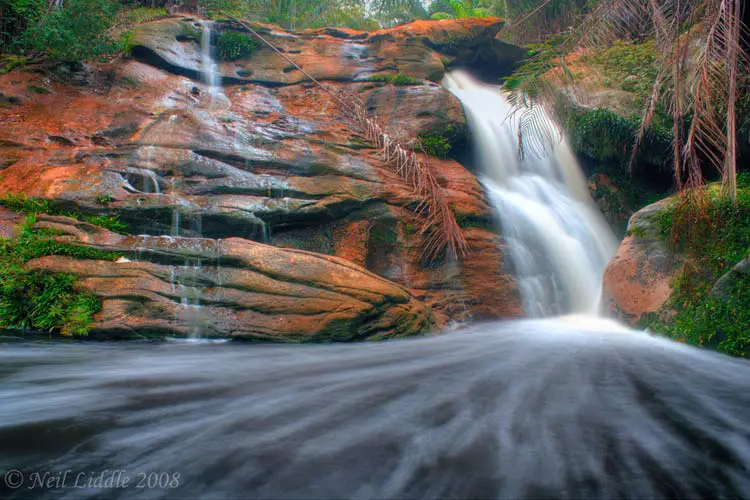Why you should visit National Parks
Some of the better-received articles in the ecotourism series have been those that focus on unconventional forms of ecotourism, such as indigenous or urban ecotourism. This week, however, we’ll be taking things in the opposite direction and discussing one of the most conventional, obvious ways to practice ecotourism: visiting a national park. It’s my hope, however, to provide some information about visiting national parks that you may not have previously considered, as well as to provide a platform to share some truly beautiful photos.
Because there are thousands of articles already floating about the internet that discuss why you should visit national parks, especially while travelling, I’ll do my best to stay away from typical reasons like “seeing cool animals” or “enjoying the fresh air.” These are certainly important reasons to visit national parks, but chances are you already know. Instead, we’ll look at some other, less talked about reasons to visit national parks, such as…
Providing Demand for the Service
Land is a commodity. Some nature lovers may not agree, but in the eyes of most people, land is something that can be bought and sold, and developed. From that perspective, it’s remarkable that national parks exist at all, especially the parks that are close to major cities and sit on highly enviable pieces of real estate. This is especially true when you consider the minimal cost of entry most national parks charge.
Clearly, there are lots of other ways that the land a national park occupies could have been used, but the government has chosen to preserve the land. As great as it would be, the choice to preserve land isn’t typically because the governments recognizes its natural beauty, but because there is a demand from local and international tourists to visit the place. This is one way you can help to preserve national parks without having to do anything. Simply by visiting them, you help to inflate the demand, which helps incentivize the government to continue protecting that land.

This is especially the case in less wealthy countries, who could really benefit from turning their national parks into plantations or factories. For example, Malaysia has made a commitment to protect Bako National Park, even though much of the land surrounding the park has been converted into profitable palm oil plantations.
Bako is extremely beautiful, and I’m grateful that the Malaysian government finds it worth it to protect the land. It’s one of the few remaining habitats of the proboscis monkey, as well as a number of other species endemic to Borneo. Still, I won’t delude myself by thinking that the Malaysian government is protecting this land because they particularly love the proboscis monkeys. They do love the proboscis monkeys, but for the same reason they love the beautiful land the national park occupies – it’s a part of their national heritage that draws visitors. By simply visiting the park, you can help convince the government that investing in national parks is worth it.

One on One Interactions with Local Nature Lovers
Besides the actual preservation of the park, helping to keep national parks alive and thriving is also helpful to the local nature lovers that work at the park. These are some of the most friendly people imaginable, and they genuinely want to help ecotourists get the most out of their experience.
For example, we visited the Poring Hot Springs outside Ranau, in hopes of finding the elusive rafflesia. Though the park was very beautiful and the hot springs were nice enough, we were disappointed that the rafflesia garden didn’t have any blooming specimens.
We mentioned this to a park employee, and she happily pointed us down the road to a locally owned rafflesia garden (you can read more about this experience in the article on Indigenous Ecotourism). I’m glad that a portion of my entry fee will go towards paying this employee’s salary, as it means she can spend more time helping tourists get connected to nature.

Spreading the Joy to Friends
We’ve already mentioned how simply visiting a national park is an easy way to promote land conservation, but there’s another way you can promote ecotourist activities without having to do anything you don’t already do – just take pictures! In today’s world of Instagram, Facebook, Twitter, and the thousands of other social media services available, it’s easier than ever to share pictures and messages with your friends of you having fun at a national park. For example below, here’s my girlfriend and I doing just that in Malaysia.
Better yet, these social media services provide a platform for you to talk about ecotourism, or even just encourage your friends to get outdoors. It’s been proven time and again that the most effective reviews are those that come from a source you know personally and trust. That’s why a friend’s recommendation for a restaurant is a thousand times more powerful than a commercial, and why your advocacy for a national park is far more effective than an article I can write.

The Beautiful Sights
Okay, okay. I know I promised to write an article about national parks without mentioning obvious benefits of visiting national parks, but it’s worth repeating that these places are stunningly beautiful. That’s why there was a demand to preserve these places in the first place. National parks are the cream of the crop in the unflinchingly beautiful landscape we call planet earth.

